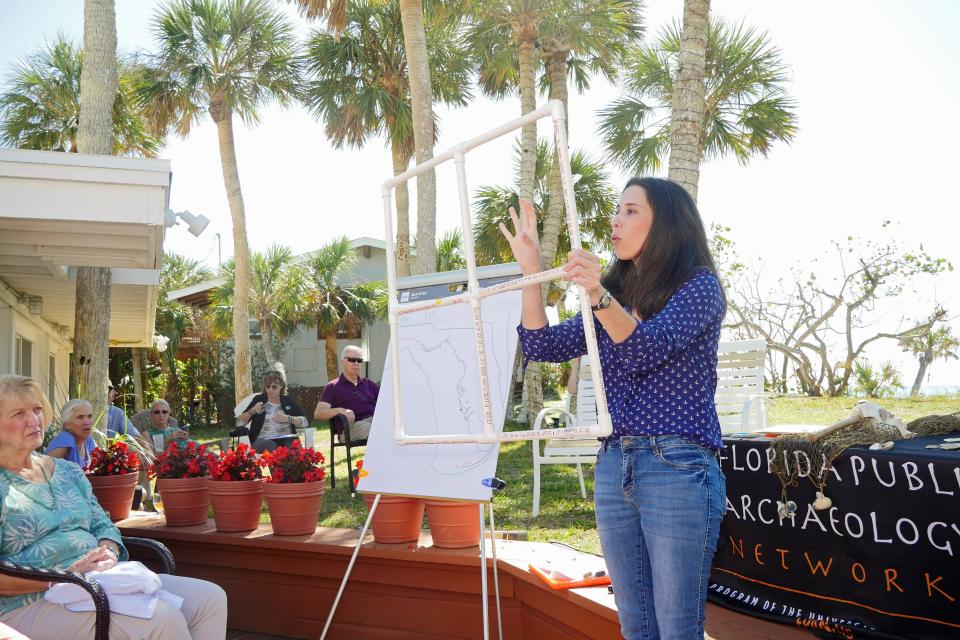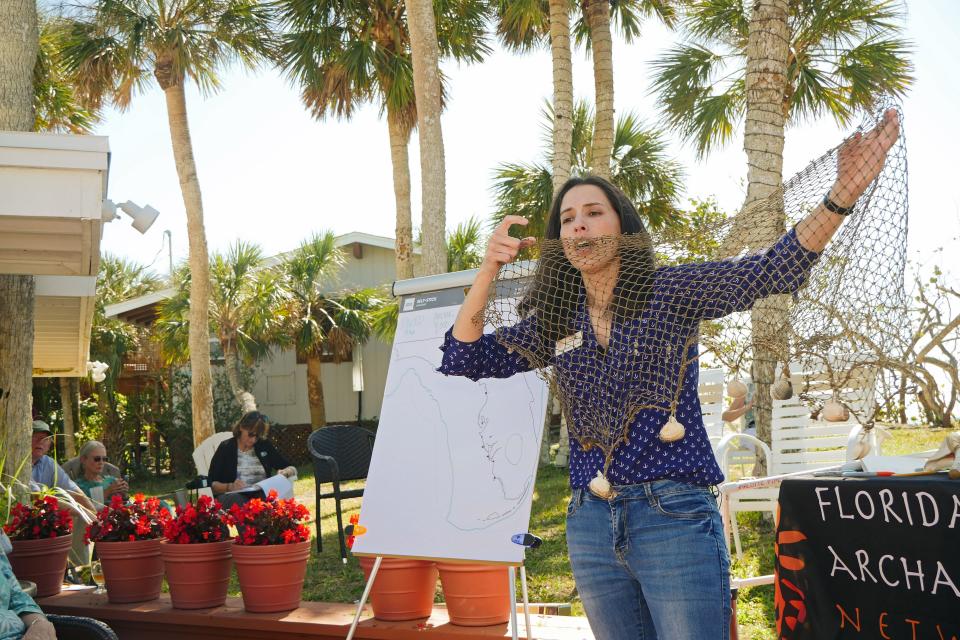Manasota Offshore archaeological site appears unharmed by Hurricane Ian
![Archaeologists work the Manasota Key Offshore archaeological site that includes a prehistoric burial site from the Florida Archaic period, a time when bodies of people who had died were interred within a pond. [COURTESY PHOTO]](https://s.yimg.com/ny/api/res/1.2/Z3U0jgUE_EvfcvRXsb1wwg--/YXBwaWQ9aGlnaGxhbmRlcjt3PTEyNDI7aD05Mjg-/https://media.zenfs.com/en/herald-tribune/bb39d087b21921ae461371d7be5723d1)
MANASOTA KEY – Though divers have not visited the Manasota Key Offshore archaeological site, state scientists believe the 7,000-plus-year-old burial ground in 21 feet of water in the Gulf of Mexico was not adversely impacted by Hurricane Ian.
Rachael Kangas, director of west central and central regions for the Florida Public Archaeology Network at the University of South Florida, told people at the Manasota Beach Club weekly lecture series that scientists had conducted a low-tide survey along the shore by the site and found no material had washed up on the beach.
More:Burial siteArchaeological site, 7,000 years old, found in Gulf near Venice
More:EnglewoodAncient burial site explored
Marker buoys at the site about a quarter-mile off of Manasota Key were also intact.
Kangas told the attendees – some of whom were relieved to find out that the place they called “our site” survived the hurricane – sandbags had been placed on the sea floor ahead of time as a short-term protective measure.
What is the Manasota Offshore site?
Found in 2016 by amateur diver Joshua Frank, Manasota Offshore is an organic peat bed that turned out to be a burial site that was once a shallow pond. During the Archaic Period, more than 7,000 years ago, indigenous people used it as a mortuary pond.

“This site would have been a freshwater pond when it was being used,” Kangas said. “It would have been on dry land and it is now in the ocean.”
Sea level then was about 30 feet lower than today.
Related:Manasota Key Offshore site was active 8,000 years ago
It is the first example in North or South America of human remains being identified offshore. The peat helped preserve artifacts, including wooden stakes used to secure the human remains.
When was it active?
The oldest underwater archaeological site dates back about 14,000 years to the Paleoindian Period at the end of the last ice age. Known as the Page-Ladson Site, it is a deep sinkhole in the bed of the Aucilla River in Taylor County.
Two underwater archeological sites – Warm Mineral Springs and Little Salt Springs in the city of North Port – also date back to that period.
The Archaic Period – which is when the Manasota Offshore site was active – started roughly 9.000 years ago.
Kangas explained that during the Paleoindian period, the earth was cooler with lower sea levels – with Florida cooler and drier.
“It probably would have looked more like an African savannah but colder,” she added.

The Archaic period, as the earth warmed, would have been marked by dramatic sea level rise – as much as 10 feet in 100 years. During that same period, both Lake Okeechobee and the Everglades formed.
What came next?
During the Woodland Period – about 3,000 years ago – indigenous people slowed their migration and settled around nascent estuaries where food was plentiful, including areas now known as Tampa Bay, Charlotte Harbor, Lemon Bay and the 10,000 Islands area.
The Safety Harbor Period, which Kangas dated back to 1,400 years ago, eventually intersected with the arrival of Spanish explorers.
This article originally appeared on Sarasota Herald-Tribune: Manasota Offshore archeological site appears unharmed by Hurricane Ian

